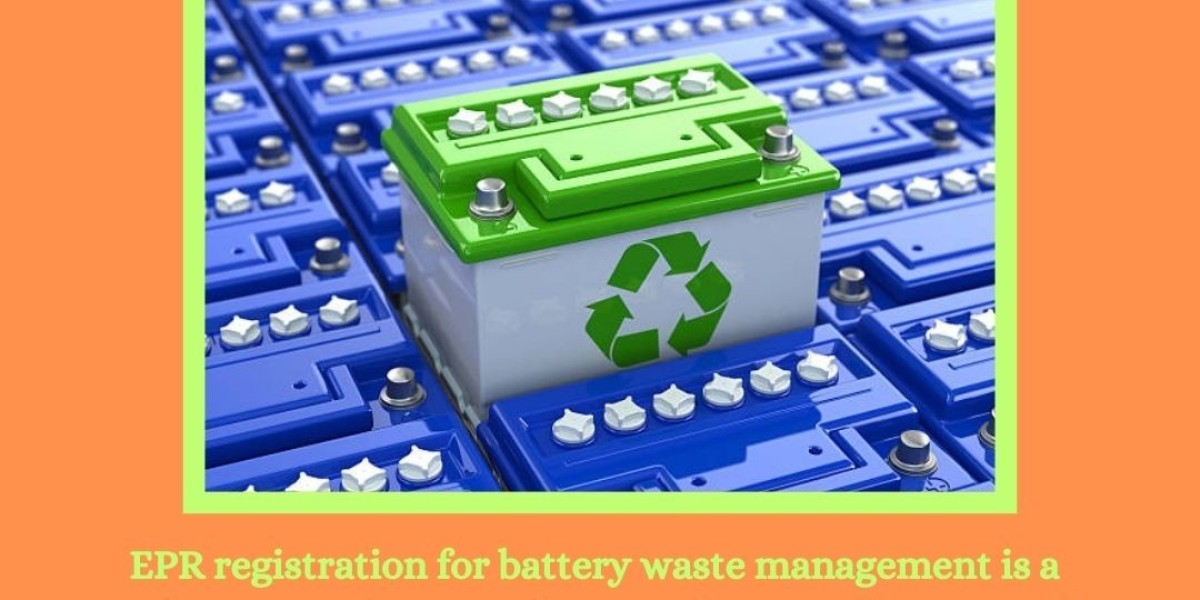Extended Producer Responsibility (EPR) has emerged as a vital tool in managing waste generated by products at the end of their life cycle. Among various types of waste, battery waste poses significant environmental and health challenges due to the hazardous materials they contain. EPR registration for battery waste management is crucial to ensure that the responsibility for the recycling and disposal of these batteries lies with the producers. This article will explore the significance of EPR in battery waste management, the process of registration, and the benefits it brings to businesses and the environment.
What is EPR and Why Is It Important for Battery Waste Management?
EPR registration for battery waste management is a policy approach that makes producers responsible for the entire life cycle of their products, including the post-consumer stage. The goal is to reduce environmental impacts by ensuring that products, including batteries, are reused, recycled, or disposed of responsibly after they have served their purpose.Batteries, especially those used in electronic devices, electric vehicles, and industrial applications, contain hazardous substances such as lead, mercury, and cadmium. Improper disposal of these batteries can lead to soil and water contamination, posing a severe risk to human health and the environment.
The EPR Registration Process for Battery Waste Management
EPR registration for battery waste management involves several key steps that producers must follow to comply with regulations and demonstrate their commitment to sustainable practices. Here's a detailed look at the process:
1. Understanding Regulatory Requirements
Before registering for EPR, businesses need to familiarize themselves with the regulations laid out by government authorities. In most countries, the Ministry of Environment or an equivalent body oversees the EPR program for battery waste. These regulations outline the responsibilities of producers, the types of batteries covered, and the recycling or disposal methods that must be adopted.
2. Identifying the Type of Batteries
Producers must identify the types of batteries they manufacture or import. Batteries are generally classified into two categories: primary (non-rechargeable) and secondary (rechargeable). Different rules may apply depending on the type of battery, and understanding these distinctions is crucial for accurate registration.
3. Registering with the Relevant Authorities
The next step in the process is registering with the appropriate government body. This typically involves submitting an application that provides details about the company’s operations, the types of batteries sold, and the estimated quantity of waste generated. The registration also includes agreeing to take responsibility for the recycling and safe disposal of the batteries at the end of their life cycle.
4. Setting Up a Waste Collection and Recycling Plan
A key component of the EPR registration process is developing a detailed waste management plan. This plan outlines how the producer will collect used batteries, ensure proper storage, and arrange for recycling or disposal. Many countries require producers to partner with certified recycling organizations to ensure that the batteries are processed in an environmentally safe manner.
Benefits of EPR Registration for Battery Waste Management
EPR registration for battery waste management offers several advantages, both for businesses and the environment:
1. Environmental Protection
EPR programs help reduce the environmental impact of battery waste. By ensuring proper recycling and disposal, the program prevents toxic chemicals from leaching into the soil and water, thus safeguarding ecosystems and public health.
2. Cost-Effective Waste Management
While EPR registration requires an initial investment in waste management infrastructure, it can lead to cost savings in the long run. By outsourcing recycling and disposal responsibilities to certified partners, companies can reduce their operational costs and streamline waste management processes.
3. Brand Image and Consumer Trust
Today’s consumers are more environmentally conscious, and companies that demonstrate a commitment to sustainable practices are likely to gain consumer trust and loyalty. EPR registration can serve as proof of a company’s dedication to reducing its environmental footprint, improving brand image.
4. Contribution to Circular Economy
EPR programs encourage the recycling and reuse of battery components, contributing to the circular economy. By recovering valuable materials like lithium, cobalt, and nickel, businesses can reduce their reliance on virgin raw materials, promoting sustainability and resource conservation.
Conclusion
EPR registration for battery waste management is a crucial step toward sustainable practices in the handling of hazardous waste. By ensuring that producers take responsibility for the entire life cycle of their products, including post-consumer waste, EPR helps protect the environment, promote recycling, and reduce the impact of harmful chemicals on ecosystems. For businesses, EPR registration offers regulatory compliance, cost savings, and enhanced brand reputation. As global awareness of environmental issues continues to grow, EPR will play a vital role in creating a more sustainable future for the battery industry and beyond.










